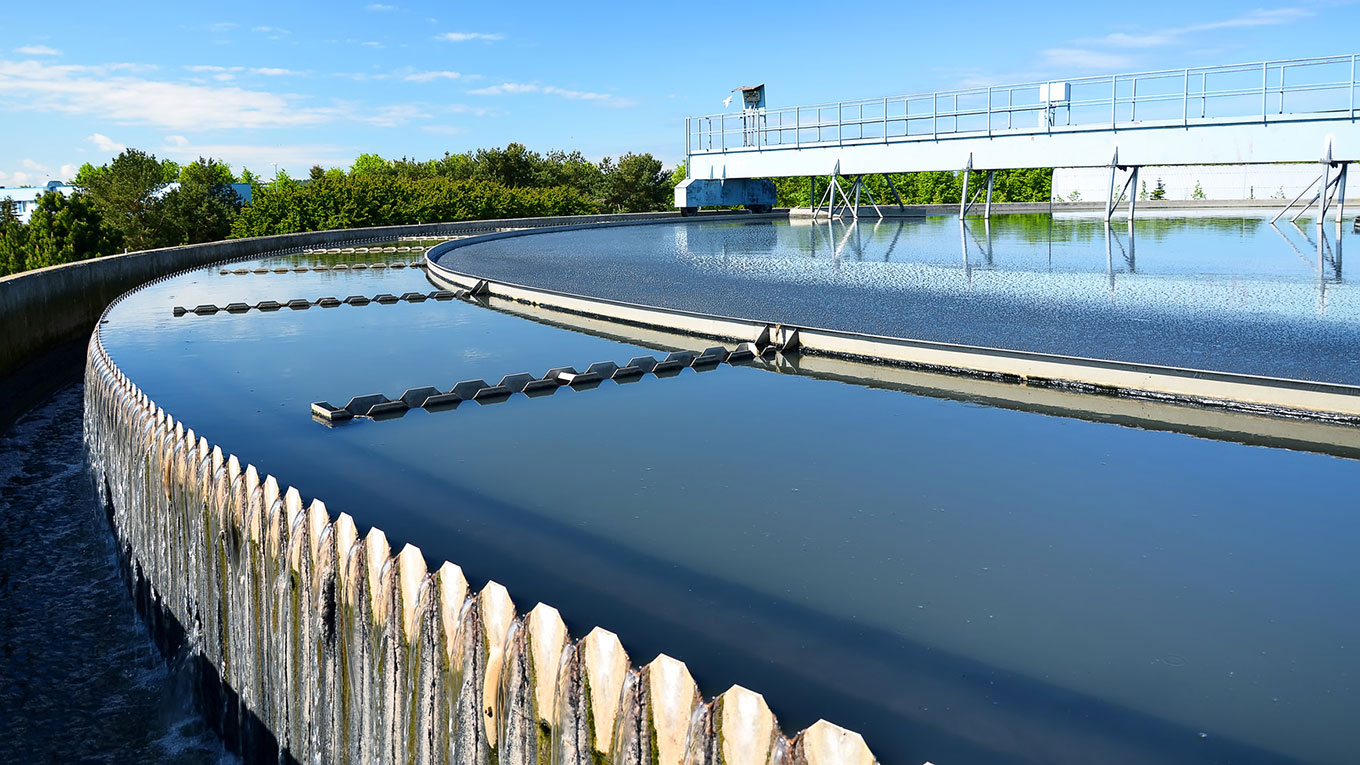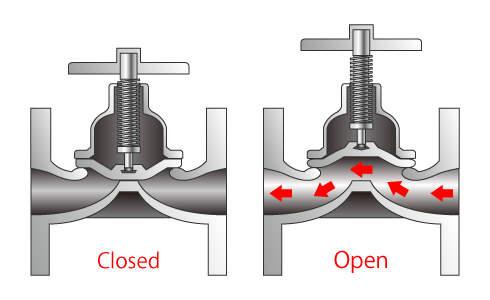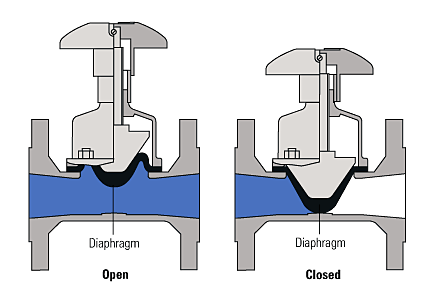Diaphragm valves are available in two basic forms: weir type and straight through types. The basic construction of both valves is similar except for the body and diaphragm.
The weir-type design is the most popular type of diaphragm valve and it is best for general use applications or for tough corrosive and abrasive services. They are best used to control small flows. The body of the weir-type has a raised lip that the diaphragm comes into contact with. Weir-type valves use a smaller diaphragm because the material does not have to stretch as far. The material can be heavier so the valve can be used for high-pressure and vacuum services. The weir design is composed of a two-piece compressor component. To create a relatively small opening through the center of the valve, the first increment of stem travel raises an inner compressor component that causes only the central part of the diaphragm to lift instead of the entire diaphragm lifting off the weir when the valve is opened. Once the inner compressor is opened, the outer compressor piece is lifted along with the inner compressor and the additional throttling is similar to the throttling function in other valves. Weir-type bodies have bonnet assemblies recommended for handling dangerous liquid or gas because if the diaphragm fails the hazardous materials will not be released into the surrounding system. They are also recommended for food-processing applications because the body is self-draining
Weir-type diaphragm valve.
The straight through type can be used in situations where the flow direction changes within the system. The body of this design has a flat bottom that is parallel to the flow stream. This allows the flow to move uninhibited through the valve with no major obstructions. A flexible material is required for the diaphragm so that the mechanism can reach the bottom of the valve body; this can shorten the life span of the diaphragm. They are excellent for use with sludge, slurries and other viscous fluids but they are not well suited for high temperature fluids
Straight-through diaphragm valve.








